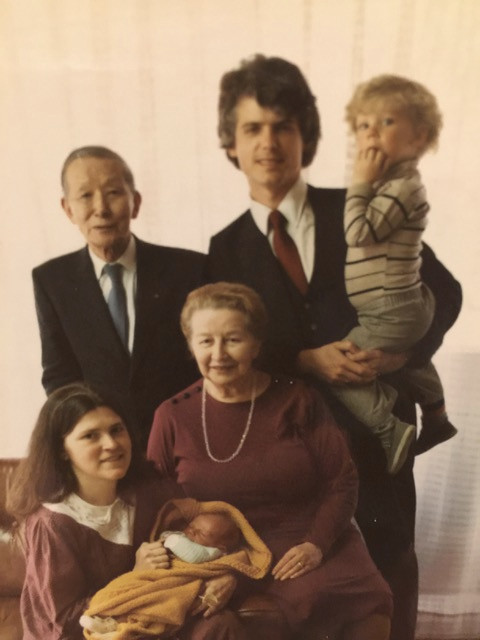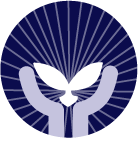William Kossler

William Kossler is a guitarist of uncommon ability in demand internationally as both a teacher and performer. He holds a MM in Guitar Performance from the University of South Carolina where he studied with Christopher Berg. William has placed as a finalist in regional and national competitions and received positive reviews for his compelling performances. He has conducted Long Term Artist Residencies with both the South Carolina and Tennessee Arts Commissions, and as a recipient of a Rotary International Scholarship spent a year in Japan studying with pedagogue Dr. Shinichi Suzuki. A co-author of the Suzuki Guitar Method and Teacher Trainer for the Suzuki Association of the Americas, Mr. Kossler has conducted pedagogy workshops for guitarists throughout the United States, South America, Canada, Europe, and Australia. He currently teaches guitar as the director of the Winston Salem Suzuki School and has served on the North Carolina Arts Council’s Touring Artists Directory as a performer on the guitar, lute, and vihuela. William performs in solo and various ensemble settings, including with two of his sons who are also accomplished guitarists. His oldest son Adam was appointed Professor of Guitar Studies at Appalachian State University in the fall of 2022. Middle son Sam is a multi-instrumentalist and performs with various artists out of Nashville Tennessee. Youngest son John is an accountant and also performs with his brother Adam as the Kossler Duo. In 2019, the Kossler Duo released their first album titled Danse Macabre, a collection of their own new transcriptions for guitar duo. The recording debuted at #2 on Billboard’s “Traditional Classical” chart, and #7 on Billboard’s “Classical Albums” chart.
Instrument studied in Japan: Guitar (my teacher was Mr. Toshio Takahashi)
Dates in Japan: August 1985-May 1986 on a Rotary International Grant
Memories
People often ask me what was my most notable memory from Japan of Dr. Suzuki. I have to say that this memory was one that came and went very quickly: I was sitting in a classroom on the first floor, right next to the downstairs office, and going over my notes that I had just taken from a class with Mr. Takahashi. I noticed there was some activity in the hallway. I leaned forward and saw Dr. Suzuki in his usual three-piece suit, pushing down the trash in the overflowing trash can that was next to the drink vending machine there. He didn’t know anyone else was around, and it struck me that he was a man who was truly humble.
I was introduced to Suzuki method during my university days by my violinist girlfriend Lauren Wile, who before going to Japan became my wife. As part of my graduate degree in classical guitar I did an independent study on what research was taking place in trying to adapt a Suzuki method for guitar. I found out that very little was going on, and I was told by the Suzuki Association of the Americas that if there was going to be a Suzuki method for the guitar, someone had to go to Japan. This sounded intriguing to me, so I applied and received a Rotary International scholarship and arrived there in August of 1985. I was 32 at that time.
The trip was easy to plan. We received a lot of help from the Suzuki office who put me in touch with one of the students who was leaving, and we ended up taking over that student’s apartment. We were met by Keiko Iriyama, one of the secretaries at the school, and my Rotary Sponsor Mr. Ono, the owner of Ono Denki (electronics) downtown. We (my wife and I and then two-year-old son Adam) were driven to the home we would be renting. I remember on that drive being terribly nervous at how narrow the roads were as well as the whole experience of being driven on the opposite side of the road.
We lived in Hirata, renting an upstairs apartment from the Tauchi Family. These were wonderful people whose parents were very influential in the city. Mr. Tauchi’s mother, whom we affectionately called “Obaasan,” had been a professional dancer, and she gave weekly dance lessons to my wife Lauren. My son Adam especially enjoyed these visits to their home, helping her “learn to speak English” and eating cookies while his mother danced.
We have a newspaper clipping from the Matsumoto paper with my wife Lauren performing at a dance recital that was given several months later. She did this in spite of being very pregnant--we were in Japan for two weeks when we were surprised to find that our second child was on his way! Our second son, Sam, was “made in Japan,” born in April. I remember getting a phone call from the doctor during one of my Vivaldi rehearsals for my graduation concert, saying, “Your baby is born in maybe five minutes from now.” I jumped in a taxi and just barely made it there in time to see him born. It was very unusual, at least at that time in Matsumoto, to allow the father to be in the room where the baby was born. To get around this, our doctor was very kind and decided to make this into a birthing class for his trainees at the hospital, so we had a group of young doctors standing by also watching Sam being born. Right after he was born, they wrapped him up, put him in my wife’s arms, and brought us tea! It was wonderful.
We had been in Japan for a week or two when the yearly Summer School was being held in Matsumoto. My wife and I were sitting on the third row of the concert hall and the first performance was a five-year-old playing a movement from the Veracini Sonata. We were absolutely stunned. My first thought, and a very naïve one, was “My goodness, this child is a genius, where did they find her?” Right after that thought passed through my head someone sitting in front of me, an American, turned to the person next to them and said, “Well, she has a very hard-working mother!” That was one of those “lightbulb going on in your head” moments for me while I was there. I brought back a video recording of that performance, and it is part of my teacher training that I offer for Suzuki Guitar.
Another memory I have was that of being at an informal Rotary International dinner and hearing a bustle of conversation which included my name going on behind me. One of the Rotary members then came up and put a bowl of “inago” (grasshoppers fried in soy sauce) in front of me. I took one look, and I knew I had to eat one. I knew I couldn’t back down. They were kind enough to place a drink in front of me to wash it down. I remember not being able to put it in my mouth because I was laughing too hard! I finally tossed it in and chewed it up to the applause of the onlookers. It just tasted like soy sauce!
My study with Mr. Takahashi was revolutionary for me. I had never studied music on my instrument with anyone besides a guitarist. Mr. Takahashi allowed me none of my usual technical excuses for not being able to be musical on my instrument! He was such a wonderful man, and we became good friends. One of the most enriching experiences I had in Japan was studying musical interpretation (Musical Expression class) with Mr. Takahashi. I did this in two settings, one class where we would listen to great performances by various artists on various instruments, and one another class where we were studying a book on opera arias by Marcel Moyse. In this second class, Mr. Takahashi would play an opera aria for us from his vast recording collection, and then we would analyze it note by note. After this we would listen to it again, and it was always stunning how much more you would hear the second time in terms of manipulating tone to create a musical effect.
The study of calligraphy was an interesting study of the value of endless repetition to gain mastery of the fundamentals of any skill. I remember practicing my calligraphy and taking it to the elderly woman who evaluated it. She would go on and on in Japanese about what I needed to correct, none of which I understood, and I would just sit there and say “Hai, wakarimashita!” (Yes, I understand!). I did my wall hanging Shuji on my favorite quote by Dr. Suzuki, “Where love is deep much can be accomplished.” It is one of the most cherished possessions I brought back from Japan, and it hangs in my living room.
When I was in Japan, Dr. Suzuki was working only with the teachers, and Miss Mori was the teacher for the young children. My son started violin instruction with Miss Mori, and I was the home teacher.
Much of what I learned was just about the personality and vision of Dr. Suzuki. He was truly inspirational to be around. For Monday morning group classes with the kenkyusei, Dr. Suzuki would always come and say, “New idea!” and then proceed to give some new way to explore tone on the violin. I remember that Dr. Suzuki could be very harsh with the adult students if they were not practicing and were there just having fun in Matsumoto! My fondest memories are of sitting in Dr. Suzuki’s studio after finishing observing him teach the violin student teachers about tone production. He would smoke Camel cigarettes and tell stories about the early days in Germany with Albert Einstein and many of the other people he had dealings with over the years.
I did two recitals while I was there. For my graduation concert, one of the pieces I did was the Vivaldi Concerto in D Major, originally written for the Lute. It was wonderful to be accompanied by several of the other kenykusei there. I remember after giving my graduation recital, sitting at the table with Dr. Suzuki and the other teachers in the kenkyusei (student) room, and looking around and realizing that for the first time in my life I felt I had found the “family” of professional colleagues that I wanted to spend the rest of my life working with. I felt more at home as a guitarist with these people (none of whom were guitarists) than I did with my guitar colleagues!
What I learned from Dr. Suzuki in Japan and afterwards had a major impact on my life. After returning to United States, in addition to my Suzuki teaching, I also became a classroom teacher in the public school system. Suzuki principles always guided my teaching (K-6th grade), no matter what subject I taught, which was rarely music.
Most importantly I was inspired to teach each of my three sons how to play guitar using the Suzuki Method. I started all of them at age 3. I was determined to use this method to have daily face time with each of my boys, and to make sure that it was a positive time spent together. My boys are all professional musicians now, and while I am proud of their accomplishments, I am prouder of what kind of men they have become. I will be forever grateful to Dr. Suzuki for teaching me to be intentional about how I raised my sons and how to use music instruction to help mold them. My boys are a tremendous source of joy in my life, and I believe it is largely because of this direction I received from Dr. Suzuki that my sons and I enjoy each other’s company and look forward to being together whenever we can.
Photo in Matsumoto


